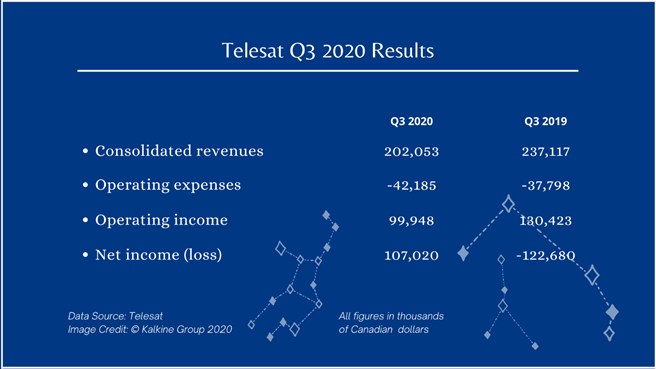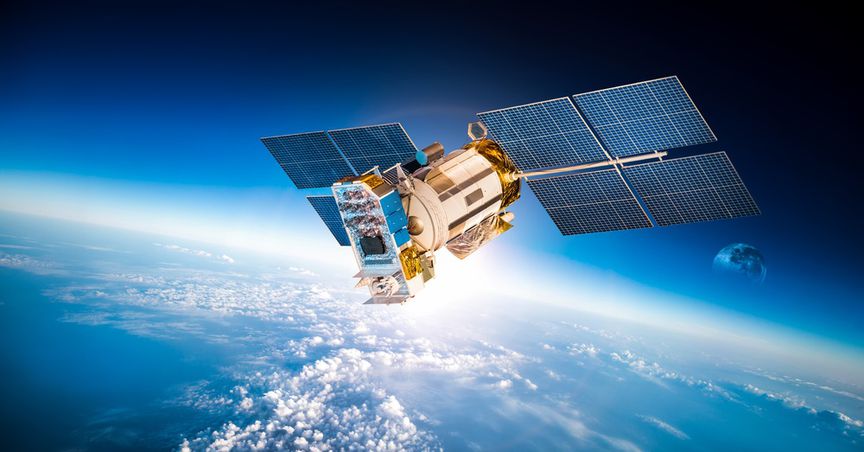Summary
- Telesat is reportedly set to launch an initial public offering (IPO) in 2021.
- The Ottawa-based satellite communications company is also reportedly in advanced discussions with suppliers for its LEO program.
- SpaceX said that it conducted a ‘successful’ beta test for Starlink satellite internet connection on October 26.
- The Elon Musk company plans to expand Starlink services in the Northern US and Canada by the end of 2020 and take it global by 2021.
Getting your internet connection from the skies is the new trend that has been gaining momentum recently. Satellite-based internet services are on the rise in the United States and Canada, with big companies like SpaceX’s Starlink and Telesat in Canada taking the game up a notch with their up and coming internet constellation projects.
SpaceX created quite a buzz in late October when it accelerated its Starlink project to launch the Better Than Nothing beta test. Canada’s telecommunications regulator also greenlit SpaceX’s application to bring Starlink’s satellite internet service to rural and remote areas in Canada.
Telesat, on the other hand, has been in the news for its LEO satellite program picking up speed and speculation over its upcoming IPO next year.
There are also reports of smaller satellite players such as OneWeb joining this race.
Let’s take a closer look at SpaceX and Telesat to understand their performances better.
Telesat
Canadian satellite communications company is reportedly set to launch an initial public offering (IPO) in 2021. According to media reports, the company intends to raise capital to support its billion-dollar LEO satellite program.
Telesat is reportedly expected to announce the IPO following final talks between its two major shareholders, Public Sector Pension Investments and Loral Space and Communications.
TELESAT’S LEO SATELLITE PROGRAM
Around February this year, Telesat CEO Dan Goldberg said the satellite equipment provider is hoping to kick-start new equipment operation by 2022. On October 29, Goldberg revealed that Telesat is in advanced discussions with suppliers for its LEO program and “in a position” to reveal these vendors’ names by the end of this year.
Telesat’s low earth orbit (LEO) satellite program is expected to be a highspeed internet service provider, especially to customers living in remote and rural regions.
The Ottawa-based company has entered a deal with Blue Origin’s New Glenn rocket to launch up to 35 Telesat LEO satellites in the Earth’s orbit. Blue Origin, founded by Amazon’s Jeff Bezos, is developing New Glenn, which is a reusable heavy-lift launch vehicle. It has also signed contracts with Relativity Space’s Terran 1 vehicle to carry its equipment to the low earth orbit.
Some experts have pointed that in contrast to SpaceX Starlink, Telesat is approaching its global LEO broadband program with at a much slower pace.
TELESAT’S Q3 2020 FINANCIAL RESULTS
Telesat reported a consolidated revenue of C$ 202 million for its third quarter ending 30 September 2020, which saw a decrease of 15 per cent year-over-year (YoY). Its operating expenses for Q3 2020 stood at C$ 42 million, up C$ 4 million YoY. The company’s adjusted EBITDA was down 20 per cent YoY, amounting to C$ 162 million, in Q3 2020.
Telesat recorded a net income of C$ 107 million in third quarter of 2020, as against a net loss of C$ 123 million in Q3 2019.
The company had about C4 2.8 billion in contracted backlog for future services and a fleet utilization was 81 per cent as of 30 September 2020.

SpaceX’s Starlink
Elon Musk’s satellite internet constellation Starlink has already won some fans in rural areas of Montana, United States. SpaceX conducted a beta test for Starlink satellite internet connection on October 26, and though it had asked users to keep a lower expectation, users reportedly were quite impressed.
SpaceX had sent out an email to its subscribers ahead of the beta test saying that the connection was likely to be inconsistent and not more than 150 mbps. While most subscribers experienced connectivity within that range, some reportedly hit download speed over 160 mbps.
The test, dubbed as Better Than Nothing Beta, provided internet connection from a network of nearly 900 satellites bobbing around in space.
SpaceX plans to expand Starlink services in the Northern US and Canada by the end of 2020, and take it global by 2021.
With the Elon Musk company planning to launch hundreds of satellites every month into the sky over the next few years, many experts have raised concern over space debris and pollution. SpaceX, however, has pointed that Starlink has advanced on-orbit debris mitigation plan in place to meet regulatory and industry standards.
SpaceX reportedly offered the beta version of its Starlink internet service for a monthly price of US$ 99 plus an installation fee of US$ 499.
SPACEX IPO
SpaceX IPO has been a topic of mystery and discussion for many over the last few years. Musk, however, put all theories to rest in September when he responded to a tweet regarding the issue. The SpaceX and Tesla CEO said that he may publicly list Starlink someday in distant future when the company generates a “smooth and predictable” revenue growth.



